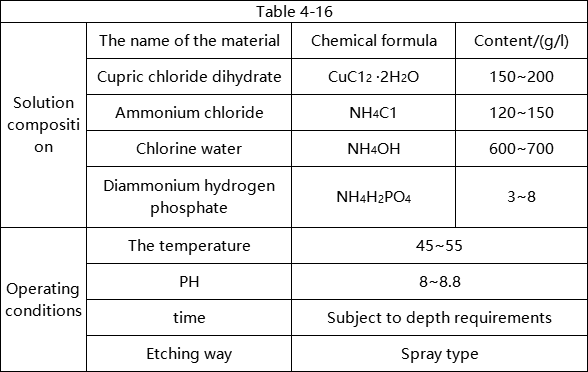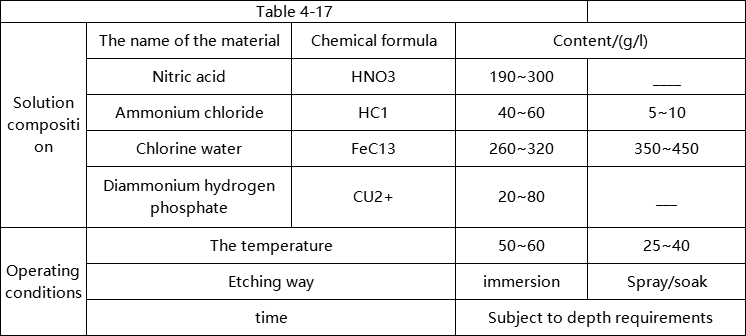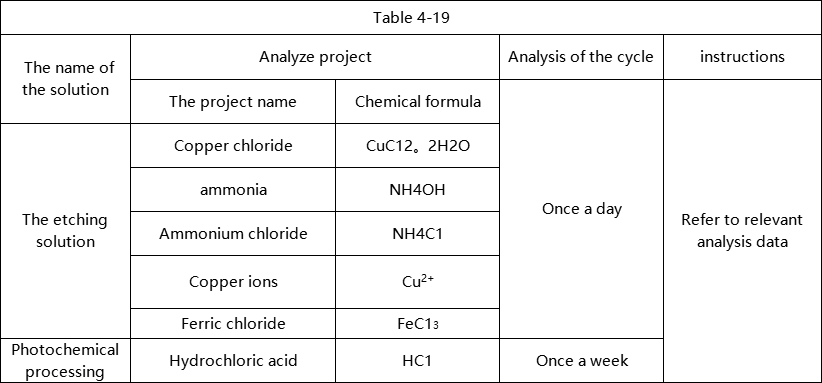News
FRIENDLY/link Nantong zhuolida Ali SAMSAN Corrosion machining Nantong zhuolida HJD Shenzhen zhuolida Esprit print
Copper alloy etching process requirements
(1) copper alloy etching process: pretreatment * corrosion prevention layer making a mounting and etching * flowing washing * photochemical treatment -- automatic washing, inspection, corrosion prevention layer drying, hanging down * inspection * packaging.
(2) the main process requirements are as follows.
①Pretreatment: according to copper and alloy pretreatment process specification (see section 2.3.3).
②corrosion prevention layer production: according to the technical specifications of the engraving method (see section 3.3.7);The photosensitive process shall be conducted in accordance with the process specification of the photosensitive process (see section 3.4.5);The silk-screen printing process shall follow the silk-screen printing process specification (see section 3.5.4).Laser lithography is performed according to the laser lithography process specification (see section 4.2.5).
③mounting: according to the different etching method to choose the appropriate mounting method.Mounting should be firm, to ensure that the workpiece does not adhere to each other, collision.Appropriate mounting position, try to avoid the generation of air bags in chemical treatment, to ensure the uniformity of etching.If the transmission etching equipment is used for etching, there is no need to mount, but appropriate tooling should be used to prevent the displacement of the workpiece during the injection and affect the etching.

④Etching: pure copper basic etching is performed according to table 4-16, while copper and copper alloy acid etching is performed according to table 4-17.For the vertical etching of the workpiece, the upper and lower positions should be changed regularly. During the etching process, attention should be paid to the change of etching depth. When etching to about 80% of the depth, the workpiece should be taken out to measure the depth, and then the remaining etching time should be determined.For depth, high steps and graphic etchings can be performed at a time determined by prior process tests.

For the vertical etching of the workpiece, the upper and lower positions should be changed regularly. During the etching process, attention should be paid to the change of etching depth. When etching to about 80% of the depth, the workpiece should be taken out to measure the depth, and then the remaining etching time should be determined.For depth, high steps and graphic etchings can be performed at a time determined by prior process tests.
⑤The photochemical processing was performed as shown in table 4-18.

⑥Inspection: this step is mainly to check the etch depth, etch surface effect is in line with the process requirements, and check whether the corrosion layer is abnormal.
⑦Removal of anti-corrosion layer: the anti-corrosion layer made by silk screen printing, photosensitive or laser lithography can be cleaned with organic solvent and 5% sodium hydroxide solution.The anti-corrosion layer made by the engraving method can be directly stripped off. For the workpiece with small thickness, attention should be paid to prevent the deformation of the workpiece during the stripping process.
⑧Drying: drying in a drying oven (chamber) at 60℃ to 80℃.
⑨Unloading: clean spinning gloves should be worn when unloading, and operators should wear clean spinning gloves in each subsequent process.(1) inspection: according to the metal chemical etching acceptance technical conditions (see section 4.2.5).
(3) solution preparation and adjustment are described below.
①Solution preparation method: omitted.②The analysis items and analysis periods of solution components are shown in table 4-19

(4) auxiliary materials shall comply with the following table
